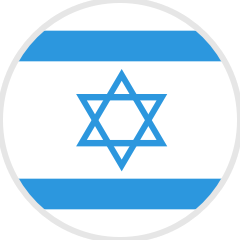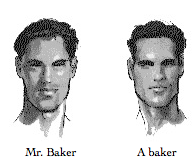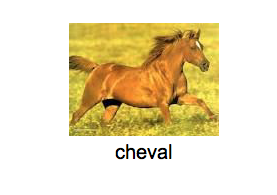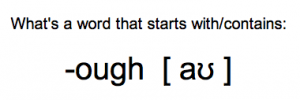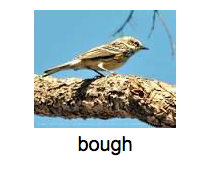Here’s How To Memorize Vocabulary in Any Language and Retain It for Good
Updated on 23rd May, 2022
To learn a language, you need to know how to memorize vocabulary, and remembering lots of it can be quite tricky. Why is that, and how do you overcome such difficulties?
When you start learning a new language, you’re faced with unfamiliar sounds and spellings, which makes foreign words significantly more difficult to remember than vocabulary in your native language. In this article, I’ll show you how to remember words in your target language more easily and quickly with the help of 5 memory hacks.
Let’s begin by understanding how our memory works, and how we can train it to perform at its best.
Observing memory at work
Memory is a muscle that helps our brain retain information via a three-process system: encoding, storage, and recall.
When we encounter an unfamiliar word, it enters this system for us to reuse when required. We initially store it in our short-term memory. At this stage, we risk losing the new word unless we transfer it to our long-term memory quickly enough, which we achieve by repeating and making continued use of it. Once it’s permanently ingrained in our brain, we’re able to retrieve that word and reuse it at will via a process called explicit memory.
This seamless brain function is how we memorize vocabulary words in any language. However, forgetting is a reality that happens every time we fail to access a stored word. There is a way to prevent it from happening, though: repetition and practice. In other words, it’s all about regularly reviewing the newly acquired vocabulary, and doing so during the first few days when a word is still fresh is crucial to help make it stick.
How long will it take to remember words?
So how long does it take to learn and memorize new vocabulary in our target language? There are several determining factors when it comes to the speed with which we pick up a new language. Among these are:
- Learner’s age
- Previous language learning experience
- Method, program, and tools used
- Learner’s approach and attitude
- Level of commitment and practice
There’s also such a thing as language difficulty. According to the US Foreign Service Institute (FSI), a language such as French will take around 480 hours of study to become proficient in. More effort (approximately 720 hours) is needed to learn a language like Japanese. Your daily study allocation will determine how quickly you reach that level of proficiency.
At Fluent Forever, we developed a 10-minute daily habit system to help learners think in a new language at the touch of an app button. Growing your vocabulary is a hugely important aspect of that process; being the building blocks of meaningful conversations, words are essentially your ticket to fluency. I recommend starting with a base list of frequency words in your target language and building on that over time. I delve into personal vocabulary strategies and goal setting in this article, where I also talk about the 625-word lists I created in multiple languages – available here. Memorizing up to 20 words per hour of study is generally highly recommended.
But what can you do to improve your memory and help that target language vocabulary stick?
Today, I will mainly focus on a vastly important technique that will help you grasp how to memorize vocabulary. This is a manual flashcard creation process I created using Anki, a process I have since automated for the app’s pronunciation features. I then go on to explore some other effective tips and tricks for remembering words in the language you’re learning.
1. Learn how to remember words consistently with mnemonics
If you’re looking for ways of how to memorize vocabulary effectively with minimal word loss, mnemonics are the number one technique. Let’s start with some background.
What are mnemonics, really? In the broadest sense, they’re anything that helps you remember information. They can range from using your knuckles to figure out which months have 31 days, to using the name “ROY G BIV” for the colors of the rainbow. Or even elaborate codes that convert hundreds of digits of Pi into a simple story.
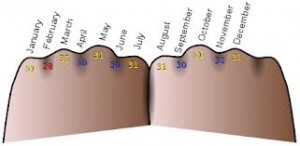
In general, mnemonics accomplish this through three main mechanisms:
- They condense large amounts of data into smaller chunks (Roy G Biv = 1–3 chunks, compared to 7)
- They turn abstract information into concrete pictures (“Turtle punch” is easier to remember than 3.1415926)
- They take advantage of spatial memory. The knuckle calendar is an example of this, but a better example would be the Memory Palace.
A bit about the Memory Palace
This ancient Greek technique lets you inhabit a place in your mind for holding your mnemonic images. Here is how to memorize vocabulary words effectively by creating your own space:
- Imagine a palace, or pick a familiar space like your home or work office. This setting will help you ground your newly learned words in the context of a spatial location. In turn, this will enable the brain to organize new information more efficiently.
- Map your way through this physical space. Visualize yourself going through the front door, accessing different rooms via corridors, and so on. Picture objects housed within, such as furniture, technology, decorative items, and light fixtures.
- Incorporate the words you want to remember into this setting as you move around. An even more effective and memorable way of doing it is to have them interact with the space or objects found there, creating additional associations in the process. For example, if you’re learning French, think of placing “fleurs” in that blue vase on the coffee table you just walked past.
The Baker-Baker Effect
For our vocabulary memorization needs, we’re generally going to focus on mnemonics that involve concrete pictures. These take advantage of what’s known as the Baker-Baker Effect. Basically, if I tell you that a man’s name is Mr Baker, you’re going to forget that information relatively quickly. Names aren’t particularly memorable. But if I tell you that this man is a baker, you’ll remember.
Why? Your brain stores sensory information (especially visual information) much better than abstract information. When I tell you that a man is a baker, you know precisely what that looks like. You may even know precisely what that smells like, and what his bread tastes like. In contrast, “Mr Baker” is just as memorable as “Mr Hampson” – it’s basically only noise, and as such, it’s totally forgettable. Mnemonics are tremendously helpful for language learning because languages are full of abstract, hard-to-remember concepts – like spelling, grammatical gender, and verb conjugation patterns – and you can use mnemonics to turn these abstract concepts into simple, memorable pictures.
I started playing around with mnemonics late in my French (I had a few pictures for word genders), and then went nuts with Russian, creating mnemonics to help me remember word stress, gender, verb conjugation patterns, verb prefixes, noun cases, everything. In Hungarian, I used them to remember spelling, too. And this is what I’d like to focus on today.
As a caveat, I’m not going to give you a system for turning any spelling into an elaborate story. These methods exist, but they take so much work to set up and so much practice to work well that I don’t think they’re worth doing. The first system of this sort turned words like “Divinitatis” into stories like “Staphylus (a minor wine-god) was in a brothel getting harassed with a tree, while in the background, a penitent, extremely well-dressed man sits in a silver chair and raises his hands to heaven.” A bit too complex, no?
Using keyword mnemonics
Other more common techniques of how to memorize vocabulary involve creating keyword mnemonics: cheval (horse) sounds like “shovel,” so I’ll imagine a horse digging a hole with a shovel. Keywords work fairly well and I use them when I can, but they have some serious limitations. How can I use a keyword to help me remember the difference between Hungarian’s kor (period/era) and kór (disease)? These two words sound almost identical, with the only difference being that kór has a longer “o.” Kor reminds me of an apple core (and so I could picture an apple core sitting around, fossilizing over an entire era of history), but what do I do with kór? A really long apple core? Keywords have their place, but they won’t help here.
I’m going to give you a way to remember whatever letters you need – think of it as mnemonics à la carte. I usually use it to remember the first letter of every word I learn, and if I need another letter or two to help remind me of a particularly tricky word (say, an ó for kór), then I’ll add more mnemonics as needed.
To do this, I assign one image to every basic spelling/sound in my language. In French, I could use cheval (horse) to represent ‘ch.’ From then on, I can reuse that horse in a variety of settings. Chat (cat)? A cheval is eating my chat. Cheveux (hair)? A cheval with elegant, long cheveux.
If you need help with multiple sounds/letters in a single word, you just add additional images. The stories get more complex, but they’re nonetheless memorable (at least for a few weeks). Over time, you eventually forget the stories and remember the spellings instead.
Putting technique into practice
In Hungarian, I have kávé (coffee) for k, orvos (doctor) for o, and óra (clock) for ó. If I need help to remember the difference between kor (era) and kór (disease), then I can imagine a grizzled, impossibly old doctor sipping his coffee to help me with kor – that doctor’s been there for an entire era – and a gross, sore-encrusted clock oozing diseased goop into a coffee cup for kór. (Sorry. It helps when your mnemonics are as vivid as possible.) I create these stories whenever I learn a word for the first time, or whenever I forget a word during my daily reviews. That way, I only spend time creating mnemonic stories when I really need it.
The nice thing about this system is that it keeps me thinking in my target language. I keep associating similar sounding words in my target language, which serves as a review for two words at once, every time I see a new word. So both words (cheval and cheveux, for instance) become easier to remember.
Flashcards for spelling purposes
For spelling mnemonics, I add one flashcard in Anki for every spelling in my target language. It looks like this:
I’ll point out two things here.
One, I’m not asking for a specific mnemonic. I’m just asking for any word that has this spelling, though I am supplying a specific example on the back of this card. And given the “When you’re right, you’re right” principle behind my flashcards, there are a lot of correct answers to this card: chat (cat), cheveux (hair) and chevalier (knight), to name a few.
Application across languages
At the beginning of my Hungarian studies, I tried to be a bit more strict with my mnemonics – I only wanted one image per spelling/sound combination – but in time, that changed. As I learned more words with similar spellings, and as I associated them together using these mnemonics, I found that I had a bunch of words and images come to mind whenever I saw a certain spelling. I could pick any of those words as a mnemonic, and they worked just fine (better, even, than the fixed mnemonics). So now I use this more flexible wording for the question on my flashcards. It’s easier to remember (all it does is make sure that I practice the ability to come up with images for any given spelling), and it helps me create big families of similar-sounding words.
In practice, regardless of the wording, you’ll tend to remember the mnemonic you chose.
Here, you’ll usually remember cheval before any other ‘ch-’ words. Only later, after a month or two, will you start to remember a bunch of images at once. Once that happens, you can pick whichever one seems most appropriate to the new word you’re memorizing.
One more thing: I’m only testing a spelling here (‘ch’), rather than a spelling/sound combination (‘ch’ as in cheval/chat). This isn’t a problem for languages like Hungarian, since every spelling only produces one possible sound. It’s even fine for languages like French, in which if you know a spelling, you’ll usually know the sound. But in a really irregular language like English or Tibetan, this can lead to some difficulties. How can you remember the difference between -ough as in “rough” and -ough as in “bough”? I can only think of two solutions for this: either you can get recordings of each sound alone (‘uff’ and ‘ow’ for the previous two examples) and stick those recordings on the front side of your cards, or you can use IPA to help you tell apart your ‘oughs’ (ufs) from your ‘oughs’ (owz):
When to skip mnemonics
It’s worth noting that I don’t always use mnemonics as a way to remember words. When a word is relatively familiar (a word like chèvre, for instance, may be pretty easy due to the cheese), I’ll skip the mnemonic entirely. And when I’m starting to reach an intermediate level, I find that I need them less and less. But even at intermediate and advanced levels, I’ll still run into words that just don’t want to stick in my brain, and mnemonics help me nail them down.
If you’re just starting out with a language, you can save a lot of time by using example words to learn spelling, and then reusing those same examples for your mnemonics. I tried out these mnemonics for Hungarian on a whim and found them extremely helpful. Hopefully, they’ll be helpful to you, too!
2. Make meaningful flashcards to review words
A surefire way of how to memorize vocabulary for good is to review it regularly. While helping to refresh your memory, word repetition transfers valuable information from your short-term memory to your long-term repository, allowing you to recall the words at longer intervals.
Spaced repetition systems (SRS), used by language learners worldwide, essentially use flashcards to reintroduce important vocabulary to you at increasing intervals. You re-encounter specific words right before you forget them, and in this way they remain fresh in your memory.
There are a number of language learning methods that use SRS to varying degrees. In our case, the Fluent Forever app takes all the effort out of language learning by automating the process, helping you review the right words at the right time. This is why the flashcards you answer correctly in the app will reappear far less frequently than the ones you get wrong, which you’ll have to review more regularly until they stick.
The Fluent Forever app goes one crucial step further. By letting you customize your flashcards with images you choose or upload, you establish an important personal connection with each specific card. This is essential to help you remember the relevant word or concept even more effectively.
3. Build sentences and stories for memorable contexts
Words don’t exist in isolation. They depend on other sentence components and the context in which they are used to make sense. So how do you go about applying this principle so you know exactly how to memorize vocabulary faster?
Rather than going down the translation route, which actually delays and complicates the word recall process, aim to think in your target language from the get-go. Using the newly learned vocab to create sentences that are relevant to you will help you remember the words more quickly; and the more unique or humorous your story is, the more likely it will stick in your head.
 Create stories or visuals to help you remember the words! Image by Tima Miroshnichenko from Pexels
Create stories or visuals to help you remember the words! Image by Tima Miroshnichenko from Pexels
If you’re a highly visual learner, drawing images or scenes to depict the action in a sentence will prove extremely helpful. Consider it the next level up from single-word flashcards, or a more tangible version of the more abstract Memory Palace-type mnemonics.
Ultimately, the more visual and contextual word associations you create, and the more regularly you use your newly learned words in writing and conversation, the more effectively you’ll manage to memorize vocabulary long-term.
4. Create an immersive setting for your vocab practice
While it may not always be possible to travel abroad to acquire new vocabulary in a country where your target language is spoken, this shouldn’t stop you from ensuring that your learning environment is as immersive a space as can be. How do you achieve that as a way to memorize vocabulary for good? If you’re learning a language on your own, the answer is clear: self-immersion.
You won’t make much progress if you try to learn in a vacuum. You need to constantly surround yourself with your target language to make sure you’re exposed to new and familiar vocabulary alike at all times. From changing your computer and cell phone language, to following podcasts and watching movies or TV shows without subtitles, to interacting and having meaningful conversations with a study buddy or native speaker, there are many fun and creative ways to create a self-immersive setting that facilitates how to remember words.
5. Find the best method for your language learning needs
When it comes to learning a language, there is no single way of doing it. We’ve all developed our own study and practice techniques over the years to help us learn new things, and languages are no exception.
First off, it’s important to take some time to see what works best for you, set personal goals and outcomes, decide how much time you can commit to the endeavor, and create a plan for success accordingly.
Knowing how to memorize vocabulary in a way that works for you is essential if you want to make good progress. See what you find effective, eliminate what doesn’t help, and then come up with a solid program to help you on your journey to fluency. You could choose to follow a few simple steps at first to see where that takes you, before putting in more effort and kicking the intensity up a notch. You might prefer to follow an existing language learning program to help you commit, or perhaps you enjoy the flexibility of experimenting with a combination of things while going it solo at your pace. From standard and customizable flashcard decks, to vocabulary games for one or multiple players, to a range of mobile apps, there’s an endless list of language learning tools to mix and match. Once you’ve decided on the most suitable approach for you, stick to it, and let the words flow!
Hint: Find out more about how to memorize vocabulary effectively and other top tips in our guide to The Fastest Way To Learn a Language.
While you can choose to customize your own language learning experience, the unique four-step method I built into the Fluent Forever product pretty much incorporates everything you need to reach personalized fluency in your target language. So here’s how to memorize vocabulary and remember it for good with my neuroscience-based approach
- Rewire and train your ears with pronunciation lessons
- Learn your base vocabulary through images instead of translations
- Learn grammar naturally through sentences and stories relevant to you
- Practice your speech to fluency with native tutors
Download the app to get you through the first three crucial steps, then master the words learned with a native speaking tutor by signing up for our Coaching program. Ready to start building your target language’s vocabulary bank? Get started right here!
[shareaholic app="share_buttons" id="28313910"]













